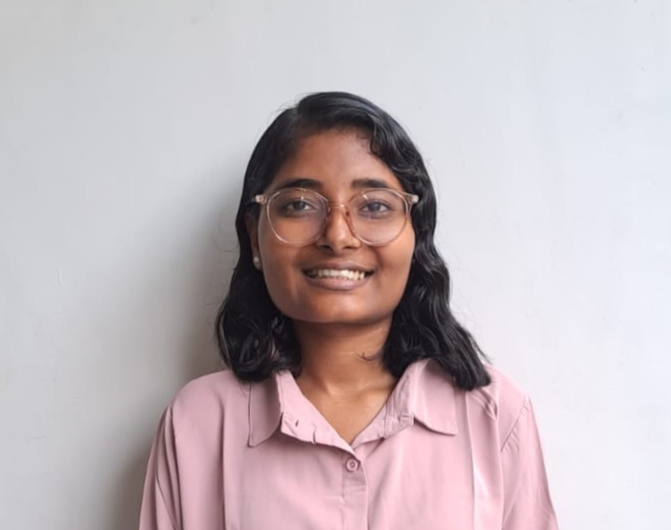Health
Women in rural Madhesh face uphill battle to access sexual, reproductive care
When rural women lack basic health literacy, common gynaecological issues go unchecked, leading to complications. The barriers also include outdated beliefs and superstitions.
Aarati Ray
In rural Madhesh, where cultural norms and limited access to healthcare compound an already fragile health infrastructure, women’s sexual and reproductive health needs are often sidelined.
For many women there, awareness of their own bodies and health needs remains a distant reality. Seeking help for sexual and reproductive health (SRH) issues is often a last resort.
Seema Kumari Pasman, a 20-year-old from Karmahi village in Dhanusha who the Post is identifying with a pseudonym for privacy, is one such example.
Married at 16 in 2019, she quickly became a mother of two children by 2022.
After two child births, her menstrual complications worsened, yet she had no frame of reference to understand that what she was experiencing—menorrhagia, or abnormally heavy bleeding—was a medical condition.
Pasman endured a year of painful, prolonged periods that she had been taught were simply part of a woman’s life—a burden, not a condition needing treatment.
Daily chores became unbearable for her but those around her continued to dismiss her symptoms.
One night in December 2023, after collapsing while fetching water from a hand pump, Pasman’s family rushed her to Janakpur Provincial Hospital.
There, doctors diagnosed her with severe anaemia from untreated menorrhagia. “The doctors told me that if I had received earlier intervention, my suffering could have been prevented...but I only thought it was normal,” Pasman says.
The culture of silence around SRH issues means that women like Pasman get help only when their conditions are critical.
A 2018 study in the Journal of Health and Allied Sciences reported low awareness of SRH rights among 384 married Madheshi women in Sarlahi. Three-fifths were unaware of these rights, and the same proportion reported experiences of physical and dowry-related violence.
Chandra Rekha Issar, a gynaecologist at Janakpur Provincial Hospital and assistant professor at the Madhesh Institute of Health Sciences (MIHS), says that for many women, the concept of openly talking about SRH—especially with male doctors—is almost unthinkable.
In rural Madhesh, as part of ‘ghunghat pratha’, married women have limited interaction with unrelated men outside their family. They are often expected to wear a veil in front of everyone except their husbands and rarely go outside alone for extended periods.
This restrictive environment creates a hesitation among women to discuss their SRH. When these women visit a gynaecologist and are assigned a male doctor, it often leads to discomfort.
Health consultations can thus become uncomfortable or are avoided altogether, exacerbating a pattern of undiagnosed and untreated conditions.
At Janakpur Hospital, this cultural barrier plays out every single day.
Kamala Devi Mandal, a 30-year-old woman from Khariyani, Janakpur, sat clutching her veil in the waiting area of the Department of Gynaecology, with her mother in law on the side.
When her turn came, Mandal hesitated upon seeing a male gynaecologist, Raj Kishor Pandit, at the door. Despite a female attendant’s presence, Mandal’s mother-in-law ultimately did the talking, while Kamala remained silent, visibly uncomfortable.
For Issar, these hesitations are all too familiar. She works alongside male gynaecologists in a department where only four of the 13 doctors are female.
“In a setting where women are uncomfortable speaking about reproductive issues, especially with male doctors, we have to proceed carefully, often through the person accompanying the patient,” she says.
Most of the female patients are accompanied by family members, as husbands are often working abroad.
For something as basic as the date of their last menstrual cycle, the patient often defers to the person accompanying her. “Most of them are under a veil,” Issar added, “and removing it, even for an eye check to assess anaemia, takes coaxing… It requires long counselling for women to open up. At times, the information we receive is incomplete, which creates challenges in treatment.”
If patients still hesitate to see a male gynaecologist after counselling, a female gynaecologist is assigned when possible, says Issar. However, this is often unfeasible during busy hours due to limited staff compared to the high patient load.
Gynecologist Issar says that about 85 percent of the hospital’s gynaecology and obstetrics cases involve pregnancy-related complications, often worsened by malnutrition, lack of prenatal care, and early marriages.
General gynaecology accounts for 15 percent of patients, with menstrual issues like dysmenorrhea and heavy bleeding common among adolescents under 19, while older patients face infections, cervical cancer, and uterine prolapse.
Due to early marriages, multiple childbirths, and home deliveries without medical supervision, many women develop uterine prolapse—a condition typically seen in older women but increasingly common in those as young as 30 in rural Madhesh.
The gendered expectations that govern interactions in rural Madhesh leave women ill-equipped to advocate for their health.
“During a health camp in Saptari, I found that over ten percent of women under 35 had uterine prolapse,” Issar says. “Early marriage and childbirth in an environment without health education or postnatal care have serious consequences.”
The barriers also include outdated beliefs and superstitions which affect women’s diet and recovery after childbirth.
“Although the situation has improved, women in remote Madhesh are often prohibited from consuming protein-rich foods like chicken soup or meat after giving birth,” says 24 year old Sapana Ray, a bachelor’s student in public health at Madhesh Institute of Health Sciences. “They are typically allowed only one meal of roti and are discouraged from more water and meal, as it’s believed that this prevents colds and other illnesses in the child,”
Ray added, “This lack of nutrition contributes to malnutrition and anaemia, exacerbating their health issues.”
When rural women lack basic health literacy, common gynaecological issues go unchecked, leading to preventable complications. For instance, over 80 percent of cases at Janakpur Provincial Hospital are critical.
“Most of these severe cases could have been prevented with early intervention or just an understanding of basic health,” Issar says.
As Issar sees it, comprehensive awareness campaigns are crucial for educating women about sexual and reproductive health.
“The government should consider monthly outreach programmes in rural areas. Women in far rural communities need direct, consistent health education,” Issar says. Further, local health posts with trained personnel could provide preventive care and answer questions women may hesitate to bring up in a hospital setting.
The hospital’s efforts to include female attendants in male doctors’ consultations and to counsel women on gender-neutral healthcare only go so far. Often, patients’ deep-seated fears and hesitation prove challenging to overcome.
While Madhesh’s women struggle with silence and a lack of resources, healthcare professionals are left piecing together fragmented stories, trying to heal patients who are often reluctant to share their suffering. It is a race against time and tradition.
Dr Issar says that it’s unfair to blame women for hesitating to discuss their issues with gynaecologists. “We need to understand and empathise with their background,” she says.
Many women, living in conservative settings, rarely have the freedom to speak openly. Given this, she questions, “How can we expect them to feel fully comfortable discussing their sexual and reproductive health, especially with a male doctor?” Even for educated urban women, she adds, these conversations can be challenging.
According to Ray, consistent ground-level awareness and counselling programmes on SRH are essential, alongside changes to the conservative and predominantly patriarchal settings in rural areas. “These social barriers, even more than medical intervention, are often the primary obstacles to healthcare access for women in these communities,” she says.




 11.12°C Kathmandu
11.12°C Kathmandu














